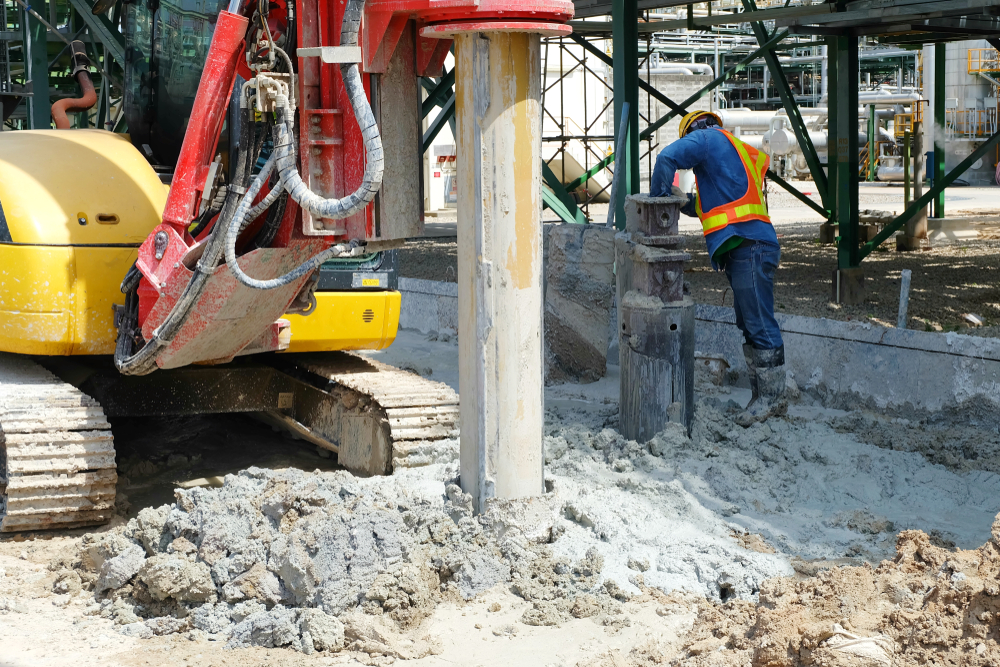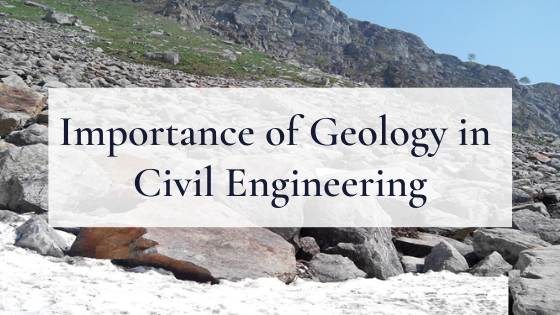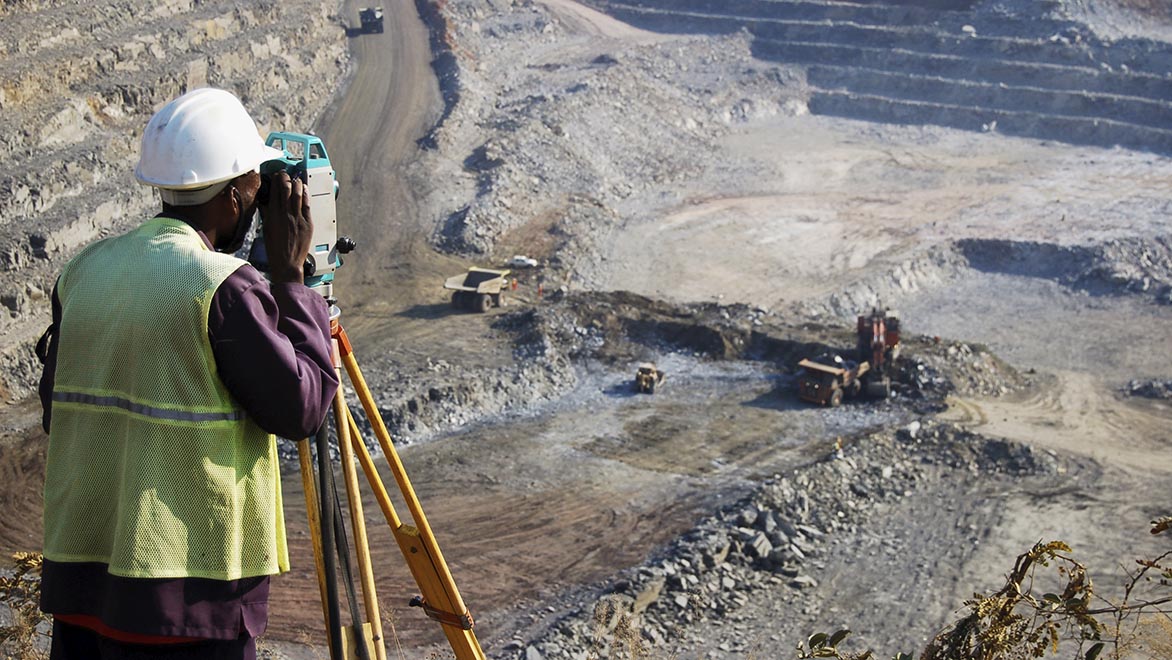Things about Geotechnical Engineering For Construction Projects
Things about Geotechnical Engineering For Construction Projects
Blog Article
The 3-Minute Rule for Geotechnical Engineering For Construction Projects
Table of ContentsGetting My Geotechnical Engineering For Construction Projects To WorkGetting My Geotechnical Engineering For Construction Projects To WorkIndicators on Geotechnical Engineering For Construction Projects You Need To KnowNot known Facts About Geotechnical Engineering For Construction ProjectsThe Main Principles Of Geotechnical Engineering For Construction Projects Unknown Facts About Geotechnical Engineering For Construction ProjectsOur Geotechnical Engineering For Construction Projects Statements
Concepts and Technique of Ground Improvement. Ground Enhancement Concepts And Applications In Asia. Style evaluation in rock auto mechanics.Cengage Learning, Stamford, 666 p. Atkinson, J., 2007. The mechanics of soils and structures. Taylor & Francis, N.Y., 442 p. Drifting Offshore Wind Generators: Responses in a Sea state Pareto Optimum Designs and Financial Evaluation, P. Sclavounos et al., October 2007. Nicholson, D, Tse, C and Dime, C. (1999 ). The Observational Method in ground engineering principles and applications.
The smart Trick of Geotechnical Engineering For Construction Projects That Nobody is Discussing
Research laboratory and field screening plays an important role in this procedure. By drawing out samples from the planet's subsurface and using a collection of tests, geotechnical designers can forecast the practices of soil layers and review their suitability for various building efforts. The essence of geotechnical engineering in civil design can not be overemphasized, attributable to several elements: The initial action in any kind of geotechnical research entails figuring out the dirt type at the construction website.
The foundation acts as the bedrock of any building and construction task. Choosing the proper structure type is a decision that pivots on the comprehensive evaluation given by geotechnical engineering.

Geotechnical website examination is a crucial action in the planning and execution of any type of construction task. It entails the collection and evaluation of data associated with the physical residential or commercial properties of dirt and rock beneath a recommended building site. This information is important for the layout and construction of safe, stable, and lasting frameworks.
Some Of Geotechnical Engineering For Construction Projects
, additionally recognized as subsurface expedition, involves a series of tasks aimed at establishing the soil, rock, and groundwater problems at a building and construction site. The key objectives are to identify potential geotechnical threats, assess the design buildings of subsurface materials, and offer suggestions for the style and building and construction of structures, keeping wall surfaces, and various other frameworks.
This may consist of geological maps, airborne pictures, previous examination reports, and historical data. The workdesk research study helps in determining prospective geotechnical issues and intending the subsequent fieldwork. Following the desk research study, a website reconnaissance is conducted to visually examine the site and its environments. This entails observing the topography, drain patterns, existing structures, vegetation, and any signs of instability or disintegration.
All About Geotechnical Engineering For Construction Projects
Shallow test pits are dug deep into to directly observe and sample the soil and rock. This method serves for researching the top layers of the subsurface and determining near-surface risks. Non-invasive geophysical approaches, such as seismic refraction, ground-penetrating radar (GPR), and electrical resistivity tomography (ERT), are used to map subsurface problems and spot abnormalities.
Soil and rock examples accumulated throughout the area investigation go through research laboratory testing to determine their physical and mechanical buildings. Typical research laboratory tests include grain size evaluation, Atterberg limits, compaction examinations, triaxial shear examinations, and combination tests. These examinations provide important data for geotechnical evaluation and layout. The information gathered from the desk research study, site reconnaissance, area investigation, and laboratory testing are assessed and translated to create a thorough understanding of the subsurface conditions.
The primary benefit of geotechnical site investigation is guaranteeing the safety and stability of structures. By comprehending the subsurface conditions, engineers can create foundations and various other architectural components that can hold up against the lots and ecological pressures they will be subjected to. This reduces the risk of negotiation, decrease, and architectural failure.
Some Known Details About Geotechnical Engineering For Construction Projects
This makes sure effective and safe construction methods. Geotechnical website examinations are usually needed by constructing codes and laws.
This info is invaluable for project managers, designers, and service providers in developing additional info reasonable schedules, budget plans, and backup strategies. Geotechnical Engineering for Construction Projects. Skyscraper Structure in a Coastal AreaIn a seaside city, a high-rise domestic building was intended on a site with suspected loosened sand down payments and a high water table. A comprehensive geotechnical investigation, including borehole drilling, CPT, and geophysical studies, was conducted
Geotechnical Engineering For Construction Projects - Questions
Based upon these searchings for, the foundation design was modified to consist of deep visit homepage pile structures expanding right into stable strata, and ground renovation techniques, such as vibro-compaction, were carried out to mitigate liquefaction threats. This proactive technique guaranteed the safety and security of the structure while staying clear of expensive post-construction remediation. Infrastructure Advancement on a Sloping TerrainA major framework task, involving the construction of a highway and bridges, was intended on a sloping surface with steep slopes.

The Leaning Tower of Pisa (Italy), a renowned building wonder, is infamous for its unintended tilt from considerable geotechnical problems. The tower's structure was inadequately created to deal with the soft, unstable dirt below it, bring about uneven settlement and its unique lean. Our globe is dotted with outstanding framework projectsfrom looming skyscrapers to sprawling bridgesall standing testament to the evolution of the numerous building devices and approaches readily available.
Geotechnical engineering is a specific area within civil design that concentrates on examining the habits of planet products. This branch dives deep right into the browse around this web-site groundinvestigating exactly how the soil, rock, and groundwater at a building website can influenceand be affected bythe infrastructure that we put up on and right into them. Prior to a solitary brick is laid or a concrete foundation poured, geotechnical engineers probe into the earthgathering vital information regarding the site's soil structure, rock framework, and groundwater degrees.
The Facts About Geotechnical Engineering For Construction Projects Uncovered

is a device utilized to evaluate the honesty and load-bearing capability of piles throughout installment, leveraging the concept of wave proliferation. It enhances construction effectiveness by giving real-time examinations, hence making sure safe and effective heap foundations. One of the practical applications of geotechnical design entails determining and implementing the appropriate approaches for structure building and construction.
Load driving stands for more than the simple act of putting structural components right into the ground. On the contrary, it is a carefully orchestrated procedure of moving a framework's tons past the less steady soil layers better to the surfacedown to the extra substantial strata that lie below. When it comes to pile driving, take into consideration exactly how geotechnical engineers skillfully utilize this strategy to equally distribute the framework's weight.
Report this page